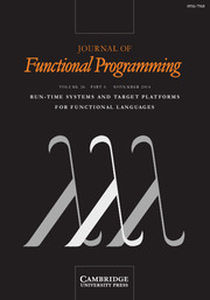Space-Time Wireless Systems
One of the most promising technologies to resolve the bottlenecks in traffic capacity of future wireless networks is multiple-input multiple-output (MIMO) communications and space-time processing. MIMO wireless technology has progressed from the stage of fundamental research to commercially available products within a decade. With over sixty contributors from the field, this book provides an extensive overview of the state-of-the-art in MIMO communications, ranging from its roots in antenna array processing to advanced cellular communication systems. A balanced treatment of three key areas---information theory, algorithms and systems studies, and implementation issues---has been assembled by four editors with a broad range of academic and industry experience. This comprehensive reference will appeal to practitioners, researchers, and graduate students in wireless communications.
- Leading experts in the field provide a broad yet comprehensive overview of wireless communications from its roots in antenna array processing to advanced MIMO communication systems
- Covers aspects of MIMO wireless ranging from information-theoretic fundamentals, over propagation theory, signal processing, VLSI implementation to advanced cellular system-level aspects.
- Contains over 190 diagrams to aid reader comprehension
Product details
February 2011Adobe eBook Reader
9780511279942
0 pages
0kg
200 b/w illus.
This ISBN is for an eBook version which is distributed on our behalf by a third party.
Table of Contents
- Introduction
- List of contributors
- Part I. Multiantenna Basics:
- 1. Propagation aspects of MIMO channel modeling J. Bach Andersen
- 2. Beamforming techniques J. Winters
- 3. Diversity in wireless systems A. F. Naguib and A. R. Calderbank
- 4. Fundamentals of MIMO channel capacity E. Biglieri and G. Taricco
- 5. Multiantenna capacity: myths and realities A. Lozano, A. M. Tulino and S. Verdú
- 6. The role of feedback, CSI, and coherence in MIMO systems G. Barriac, N. Jacobsen and U. Madhow
- Part II. Space-time Modulation and Coding:
- 7. Introduction to space-time codes A. R. Calderbank and A. F. Naguib
- 8. Perspectives on the diversity-multiplexing trade-off in MIMO systems H. Yao, L. Zheng and G. W. Wornell
- 9. Linear precoding for MIMO channels A. Scaglione and P. Stoica
- 10. Space-time coding for noncoherent channels J.-C. Belfiore and A. M. Cipriano
- 11. Space-time coding for time- and frequency-selective MIMO channels X. Ma and G. B. Giannakis
- Part III. Receiver Algorithms and Parameter Estimation:
- 12. Array signal processing A. B. Gershman
- 13. Optimal subspace techniques for DOA estimation M. Jansson, B. Ottersten, M. Viberg and A. L. Swindlehurst
- 14. Blind and semiblind MIMO channel estimation D. Slock and A. Medles
- 15. MIMO receive algorithms T. Kailath, H. Vikalo and B. Hassibi
- 16. Space-time turbo coding S. ten Brink
- 17. Training for MIMO communications Y. Sung, T. Sung. B. M. Sadler and L. Tong
- Part IV. System-level Issues of Multiantenna Systems:
- 18. MIMO Gaussian multiple access channels M. Mohseni, M. Brady and J. Cioffi
- 19. On information-theoretic aspects of MIMO broadcast channels G. Caire, S. Shamai (Shitz), Y. Steinberg and H. Weingarten
- 20. Multiuser MIMO systems H. V. Poor, D. Reynolds and X. Wang
- 21. Opportunistic communication: a system view P. Viswanath
- 22. System level performance of MIMO systems N. Marina, O. Tirkkonen and P. Pasanen
- Part V. Implementations, Measurements, Prototypes, and Standards:
- 23. What we can learn from multiantenna measurements E. Bonek and W. Weichselberger
- 24. Experiments in space-time modulation and demodulation W. Zhu, H. Lee, D. Liu, D. Browne and M. P. Fitz
- 25. Multiple antenna techniques in 3G wireless systems R. A. Soni and R. M. Buehrer
- 26. MIMO wireless local area networks K. Gosse, M. de Courville, M. Muck, S. Rouquette and S. Simoens
- 27. VLSI implementation of MIMO detection A. Burg and D. Garrett
- Index.






